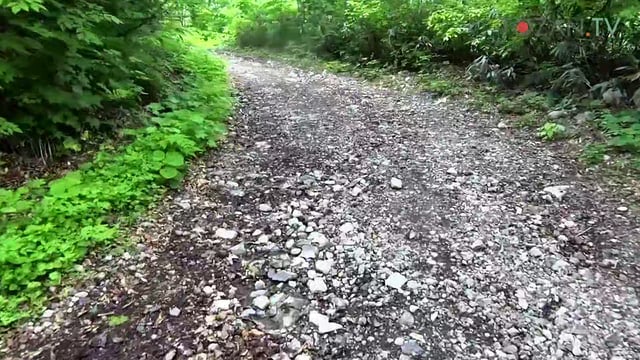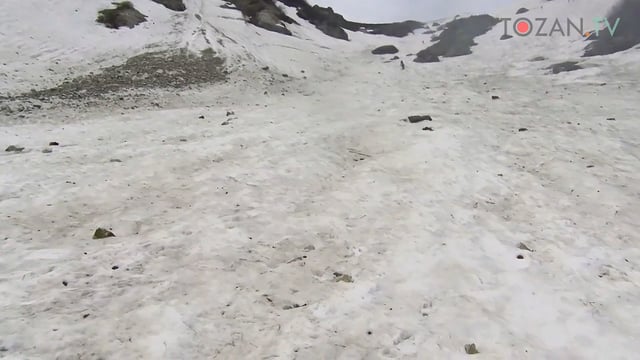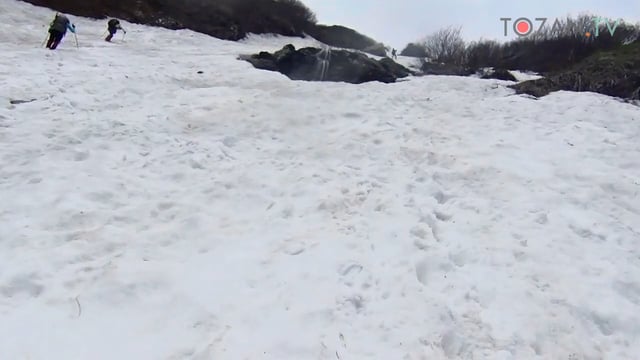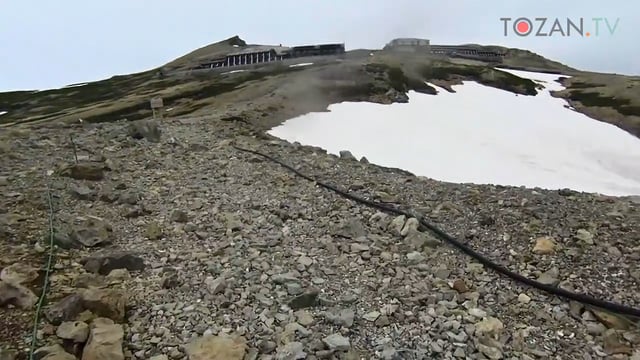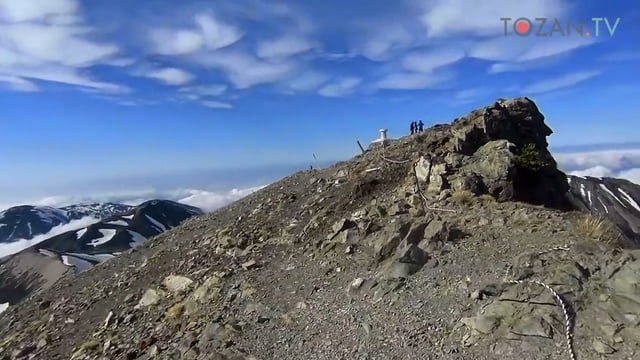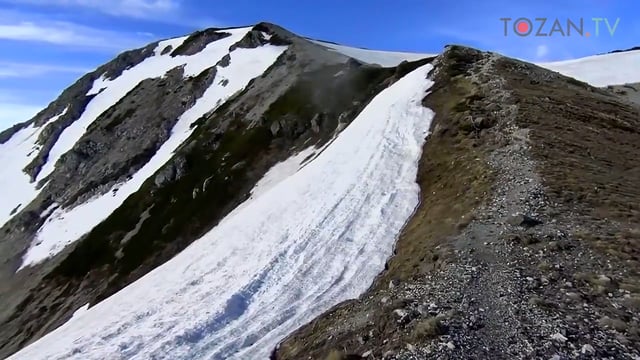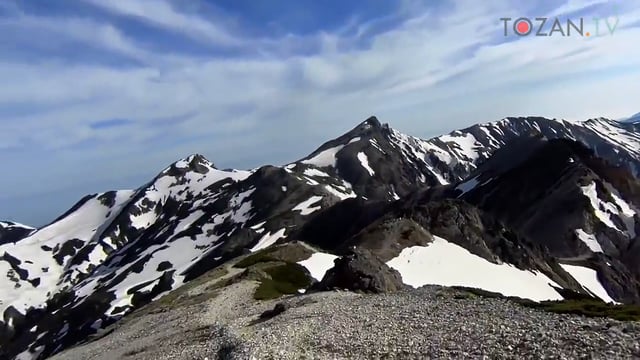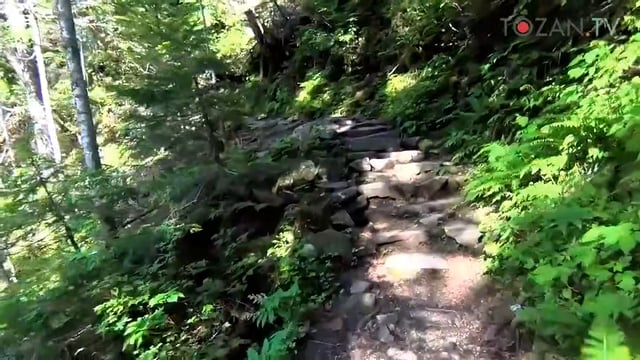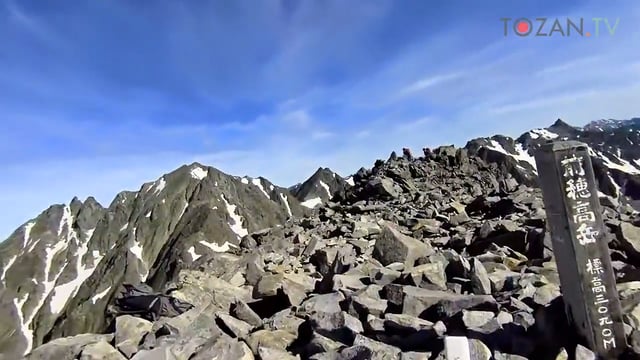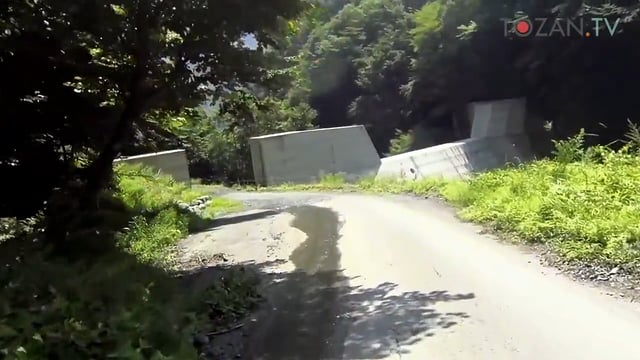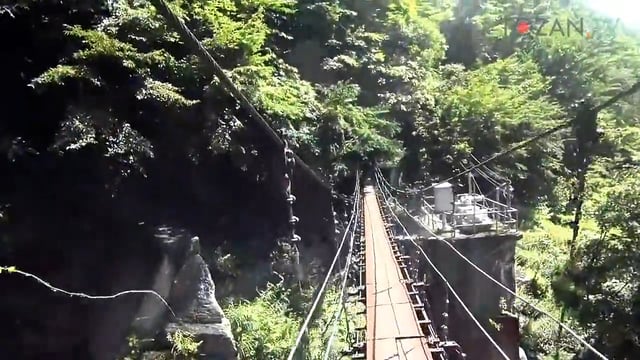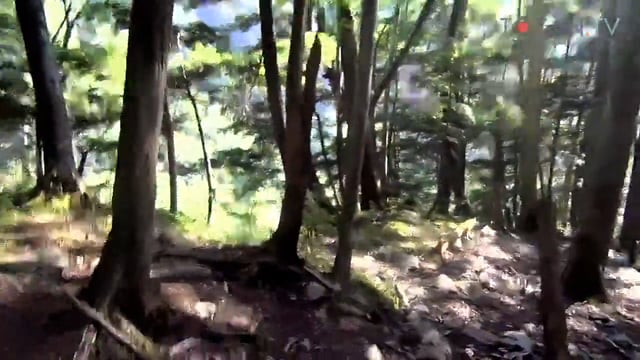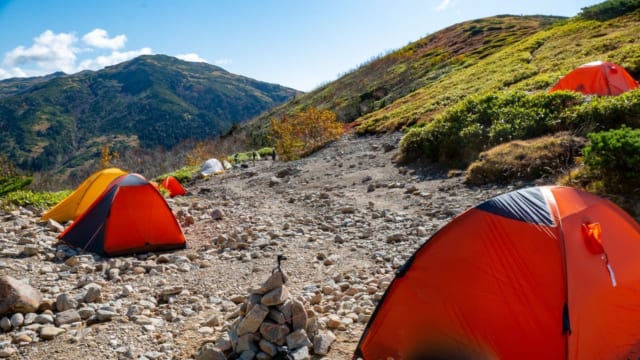| Time | Event |
|---|---|
| 00:03:49 | a log bridge |
| 00:10:16 | metal stairs |
| 00:12:29 | a log bridge |
| 00:25:23 | around the area where detour a small ridge |
| 00:37:27 | the beginning of descending Hatchou-zaka |
| 00:58:52 | reached the dry riverbed |
Descending Hatchou-zaka from Daimon-sawa-goya
It continues a fresh trail along with Daimon-sawa1 after Daimon-sawa-goya2. After walking a side of the small ridge, a downhill called Hatchou-zaka3 has begun. Most of the downhill part will be finished when you finished descending of Hatchou-zaka.
- 大門沢(大門沢). "沢" is the meaning of a river. In Japanese, most of the river in the city must be "川". "沢" is contained in "川" but "沢" is shorter and/or narrower than "川". There is no absolutely standard. Judging relatively whethere it is "川" or "沢". By the way, Sawa is sometimes used meaning of a watering place when using alone. ↩
- 大門沢小屋(だいもんさわごや). “小屋” is the meaning of a hut. When we call a hut in Japanese, there are some variations of expression. "小屋(こや・koya/goya)", "山荘(さんそう・sanso)", "小舎(こや・koya/goya)", "ヒュッテ(ひゅって・hutte)", "宿舎(しゅくしゃ・shukusha)" and so on. They are all same meanings, the place where you can use for accommodation, but I think there is no obvious difference between them. ↩
- 八丁坂(はっちょうざか). “坂” means a slope. ↩










